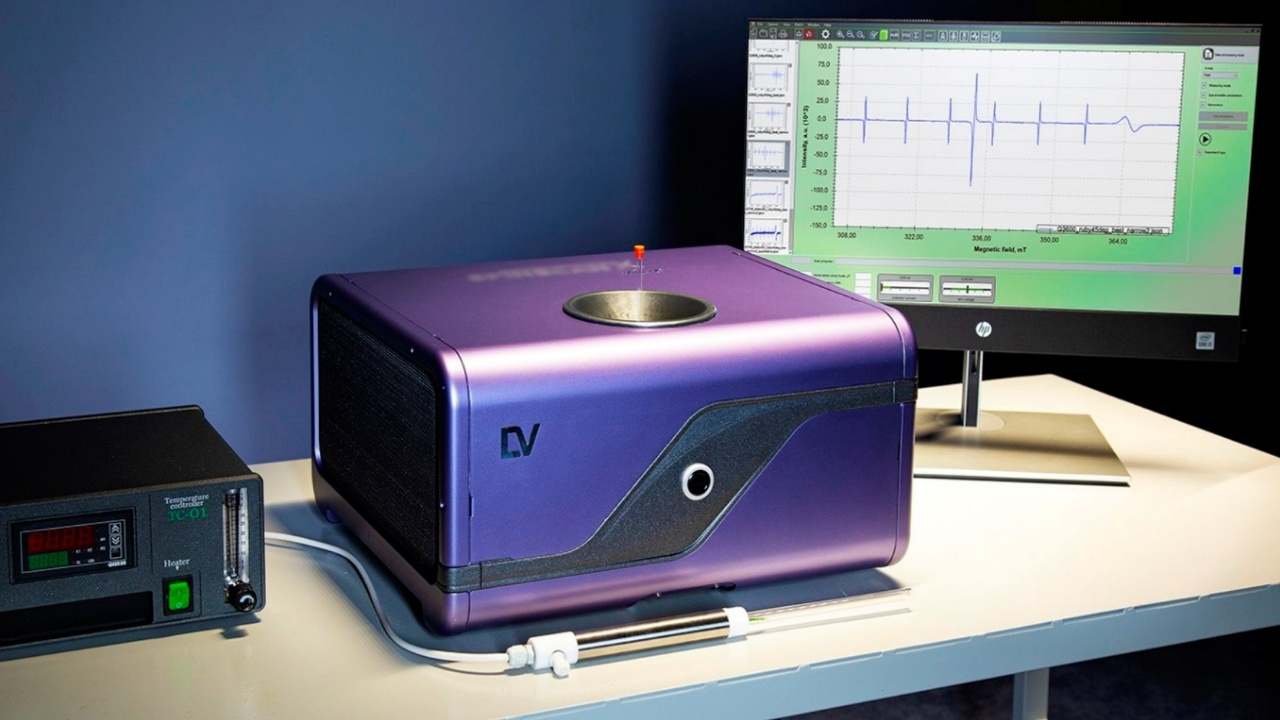
What is an EPR spectrometer? An EPR spectrometer is a scientific instrument used to study materials with unpaired electrons. EPR, or Electron Paramagnetic Resonance, helps scientists understand the magnetic properties of these materials. This tool is crucial in fields like chemistry, physics, and biology. It can analyze metals, organic radicals, and even some biological systems. By measuring how unpaired electrons react to magnetic fields, researchers can gather detailed information about molecular structures and reactions. Whether you're a student, a scientist, or just curious, learning about EPR spectrometers opens up a world of fascinating discoveries.
What is an EPR Spectrometer?
An EPR spectrometer is a scientific instrument used to study materials with unpaired electrons. It stands for Electron Paramagnetic Resonance, a technique similar to NMR (Nuclear Magnetic Resonance) but focuses on electron spins instead of nuclear spins.
- EPR spectrometers are primarily used to detect and characterize paramagnetic substances.
- These instruments can measure the magnetic fields of unpaired electrons in a sample.
- EPR is particularly useful in studying metal complexes, organic radicals, and defects in solids.
- The technique can provide detailed information about the electronic structure of molecules.
- EPR spectrometers can operate at various frequencies, typically ranging from 1 GHz to 100 GHz.
How Does an EPR Spectrometer Work?
Understanding the working principle of an EPR spectrometer can be fascinating. It involves the interaction of magnetic fields with unpaired electrons in a sample.
- An EPR spectrometer applies a strong magnetic field to the sample.
- The instrument then irradiates the sample with microwave radiation.
- Unpaired electrons absorb this radiation, causing transitions between magnetic energy levels.
- The spectrometer detects these transitions and generates a spectrum.
- The resulting spectrum provides information about the magnetic environment of the electrons.
Applications of EPR Spectroscopy
EPR spectroscopy has a wide range of applications in various scientific fields. It is a versatile tool for researchers.
- EPR is used in chemistry to study reaction mechanisms and intermediates.
- In biology, it helps investigate the structure and function of metalloproteins.
- EPR can analyze the oxidative stress in biological systems.
- It is employed in materials science to study defects and impurities in solids.
- EPR spectroscopy aids in the development of new drugs by studying drug-receptor interactions.
Advantages of Using EPR Spectrometers
EPR spectrometers offer several advantages over other analytical techniques. These benefits make them indispensable in many research areas.
- EPR is highly sensitive to unpaired electrons, making it ideal for studying paramagnetic species.
- The technique is non-destructive, preserving the sample for further analysis.
- EPR can provide both qualitative and quantitative information about a sample.
- It allows for the study of samples in various states, including solids, liquids, and gases.
- EPR spectroscopy can be performed at different temperatures, from cryogenic to high temperatures.
Limitations of EPR Spectroscopy
Despite its many advantages, EPR spectroscopy has some limitations. Being aware of these can help researchers choose the right technique for their studies.
- EPR is limited to samples with unpaired electrons, excluding diamagnetic substances.
- The technique requires specialized equipment and expertise.
- EPR spectra can be complex and challenging to interpret.
- The sensitivity of EPR decreases with increasing temperature.
- High-frequency EPR spectrometers can be expensive and require significant maintenance.
Future Trends in EPR Spectroscopy
The field of EPR spectroscopy is continually evolving. Emerging trends and advancements promise to expand its applications and capabilities.
- Development of high-frequency EPR spectrometers for better resolution.
- Integration of EPR with other techniques, such as NMR and X-ray crystallography.
- Advances in computational methods for simulating and interpreting EPR spectra.
EPR spectrometers are powerful tools that have significantly contributed to scientific research. Understanding their principles, applications, advantages, and limitations can help researchers make the most of this technology.
The Final Word on EPR Spectrometers
EPR spectrometers are powerful tools in scientific research. They help scientists study materials at the molecular level, revealing details about electron structures and magnetic properties. These instruments are crucial in fields like chemistry, physics, and biology. They aid in understanding complex systems, from simple molecules to advanced materials.
EPR spectrometers work by detecting unpaired electrons in a sample. This helps researchers learn about the sample's environment and behavior. The technology has evolved over the years, becoming more precise and versatile.
Whether you're a student, a researcher, or just curious, knowing about EPR spectrometers can open up a world of scientific discovery. They are not just machines; they are gateways to understanding the unseen. So, next time you hear about EPR spectrometers, you'll know they are essential in unlocking the mysteries of the molecular world.
Was this page helpful?
Our commitment to delivering trustworthy and engaging content is at the heart of what we do. Each fact on our site is contributed by real users like you, bringing a wealth of diverse insights and information. To ensure the highest standards of accuracy and reliability, our dedicated editors meticulously review each submission. This process guarantees that the facts we share are not only fascinating but also credible. Trust in our commitment to quality and authenticity as you explore and learn with us.
